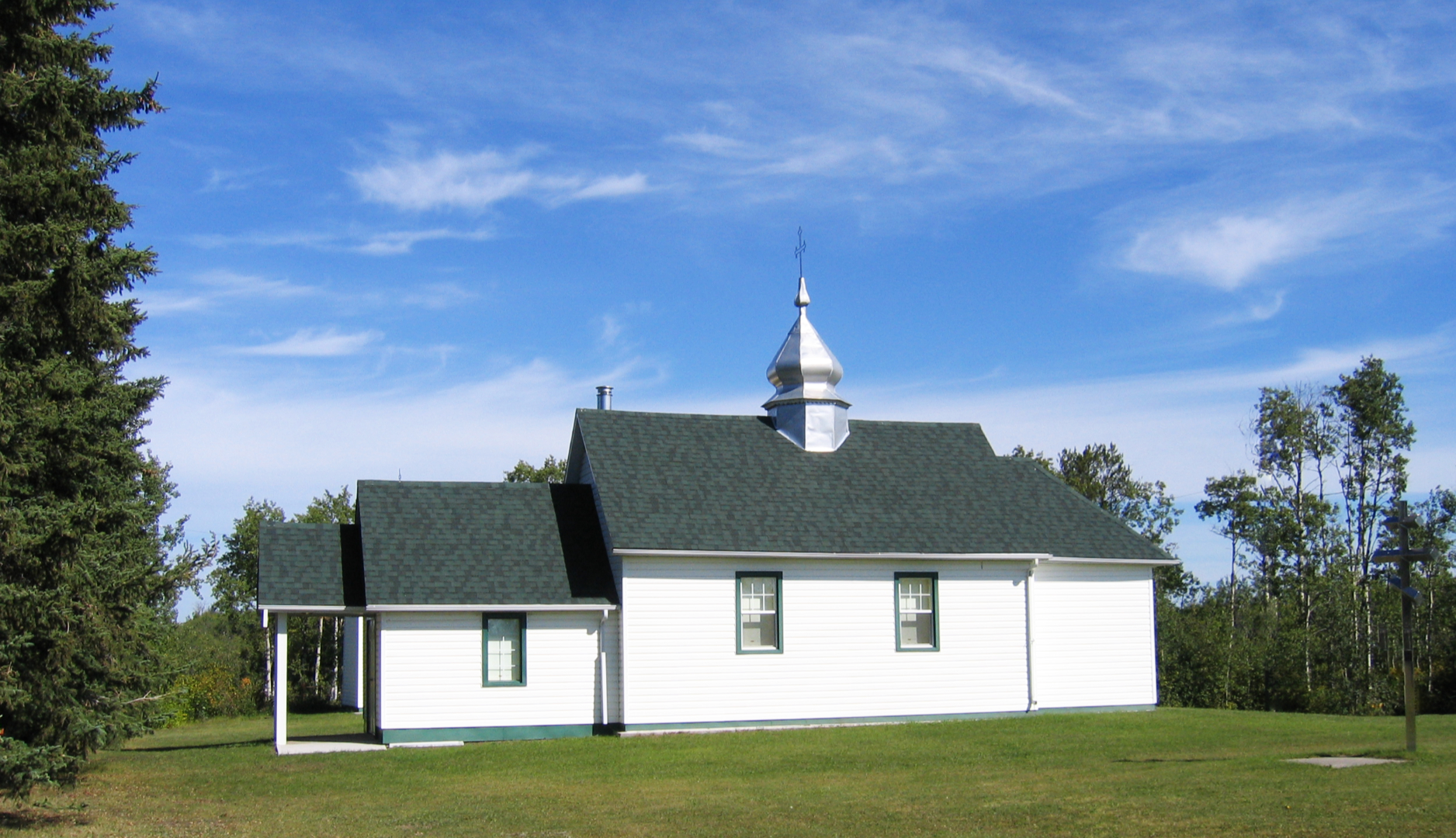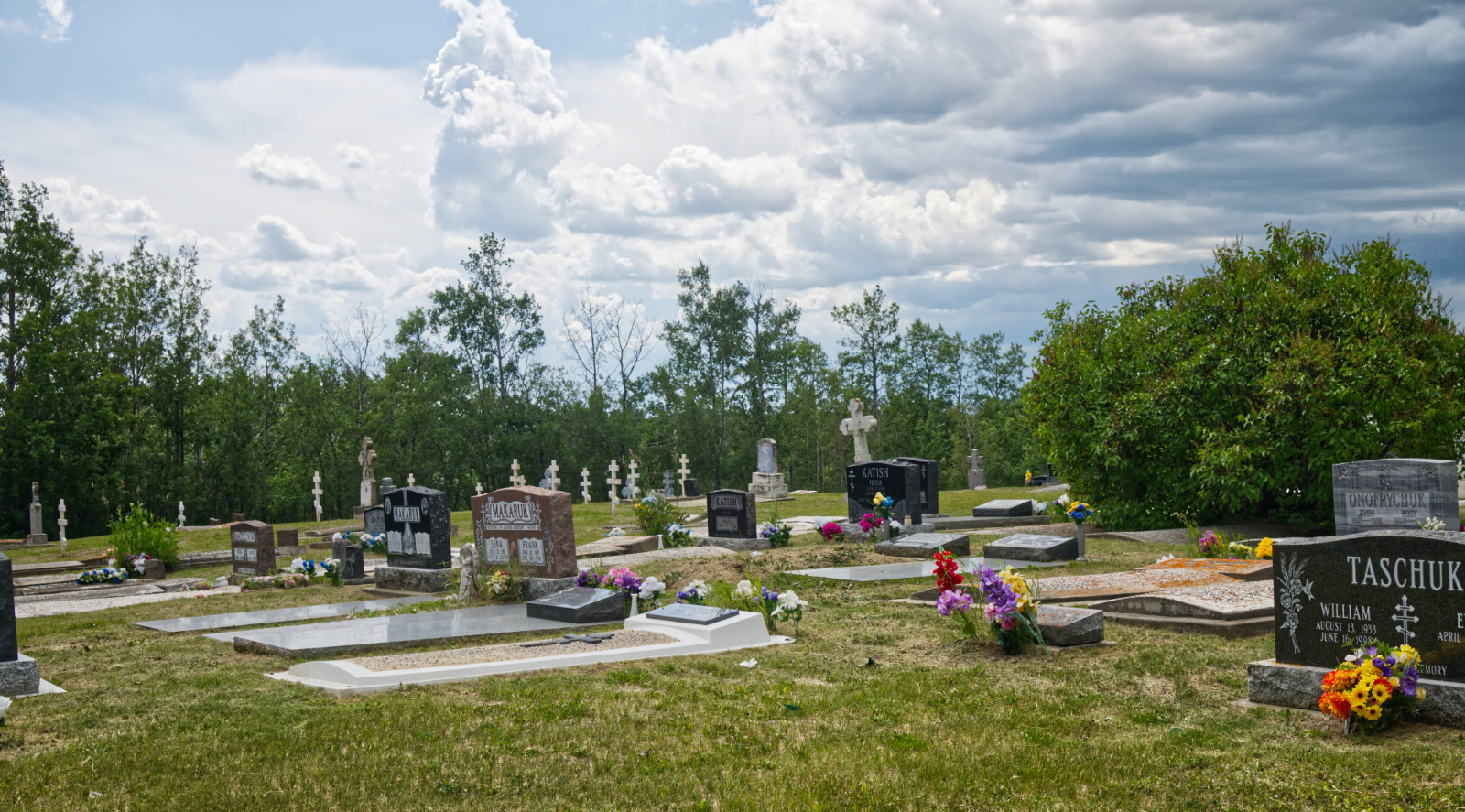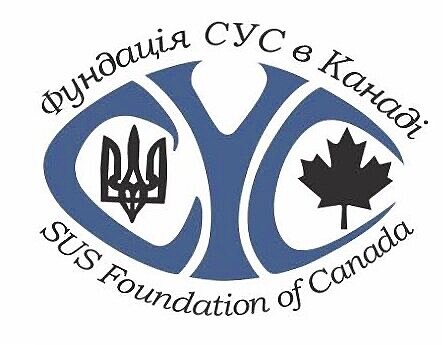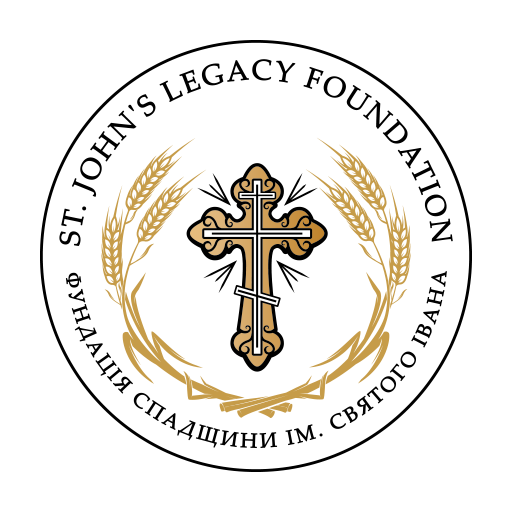

Now known as Beacon Corner, this district was originally called “Nova Bukovyna” by the Ukrainian pioneers who settled it in the early 1900s. It was subsequently renamed Gifford after a school district was created in 1921. Congregational life was initiated in 1914, when forty-three local residents paid a fifty-cent annual membership fee and registered themselves under the name Nova Bukovina, St. Peter and St. Paul Russo Orthodox Church. Around this time, a cemetery was started on a property that was originally settled by Paul Olenick, who filed for his quarter (at NW 15-60-8 W4) with the Land Titles office on 12 December 1914. However, it soon became apparent that the low-lying piece of land that they had selected was subject to seepage from the water table and was therefore not ideally suited for a graveyard. Consequently, in 1915 a second four-acre parcel was demarcated on the crest of a hill on a quarter section belonging to William Apostoluk (at SW 23-60-8 W4), one of the founding members of the congregation. Soon after, members of the congregation began brushing the site and cutting and hauling timber from the property of Wasyl Bordeniuk, a task made more difficult because of the rolling terrain that had to be traversed by the horses.
In the meantime, occasional services were held in the homes faithful adherents, with Fr. P. Dohanko commuting by wagon from Szypenitz, outside of Two Hills, several times a year to minister to the community. Parishioners either waited for these sporadic visits to have weddings and baptisms, or else travelled sixty miles to Szypenitz to receive sacraments. Sometimes they turned to Roman Catholic clergy at nearby St. Vincent (formerly Denisville) in moments of necessity. But mostly they tried to schedule marriages and christenings during the visits of Orthodox priests.
By 1917 there was sufficient dried wood to begin construction of a church. Work proceeded under the direction of Tom Onyshko and Metro Morie, who acted as the chief carpenters. The simple log structure, adorned with a small, centrally placed dome, was largely completed in 1919 and henceforth referred to as “the church on the hill” (tserkva na horbku) by Ukrainian and non-Ukrainian farmers alike because of its prominent place on the landscape. The first service in the new sanctuary was celebrated by Fr. Elkowich on the Feast of the Pentecost, when two couples were married and a baptism took place. His arrival was somewhat delayed as his vehicle got stuck on a muddy trail near St. Vincent. He had to be conveyed the rest of the distance by a local settler. The finished church was formally blessed on 12 July 1920. It was dedicated to Sts. Peter and Paul, after which a celebratory dinner was held to mark the inaugural khram, or feast day.
A few years after the establishment of the Ukrainian Greek Orthodox Church of Canada, most of the members of the congregation voted to affiliate with the new formation. Consequently, from 1926 onward the Nova Bukovyna community – which by then had become known as Gifford – was served by clergy with the UGOC, beginning with Fr. Tymofii Horbay. As the first Orthodox church to be built in the Glendon-Bonnyville area, for some time Sts. Peter and Paul provided for the spiritual needs of the Ukrainian settlers in several outlying districts that eventually built their own sanctuaries.
Over the years, the original log church underwent a series of renovations and improvements. The logs were stripped and covered with painted siding, and a vestibule was added to the structure. An attractive wooden bell-tower was also erected on the site, housing a large, mellow-toned bell that was donated by the Kostiniuk family. When the floor began to show signs of decay, it was removed and replaced by a concrete slab that was subsequently carpeted. The entire church property was newly fenced and gated to keep out animals. In 1960, a hall was erected and henceforth utilized for both church and community functions. Similarly, the winding trail that for many years provided access to the hilltop was eventually abandoned for a road that climbed straight up the slope thanks to an appropriately modified gradient.
Only scant information is available about the activities of the Nova Bukovyna faithful. In 1953 it was reported that the congregation had just four members and that only one Divine Liturgy was celebrated at Sts. Peter and Paul. Most of the residents of the district were regularly attending services at Holy Trinity church in Glendon. It was further revealed that the congregation still did not formally belong to the Ukrainian Greek Orthodox Church of Canada, despite having voted to join more than a quarter of century earlier. This situation was only rectified in 1959, when an annual meeting held on 14 June resolved to accept the bylaws of the UGOC. The parish was duly granted a certificate of admission, or hramota.
By this time, the circumstances of the congregation had improved considerably, albeit at the expense of the Holy Ghost parish. According to a letter from an executive member with the latter, the Glendon Church had been gradually weakened by the departure of some of its members from the area. A dissaffected group had broken away and joined the “country” church at Gifford. Thus, in 1960, Rev. Dorosh-Zmiyiewsky reported to the Consistory that he had celebrated seven Divine Liturgies at Sts. Peter and Paul, which by then, boasted a membership of 15 families. It was at this time the congregation erected a hall on its property and undertook other improvement projects. Although in 1965 Gifford was reported as having 19 members, in the decade following the Nova Bukovyna community began to experience a gradual decline. A letter written to the Consistory in March 1972 indicated that four of its members had died in the previous year and that the aging church was in bad need of repair. Nonetheless, the faithful of Gifford persevered in their efforts, and the church continued to be maintained and used by local adherents. Significantly, on the congregation’s feast day of 12 July 1986. Bishop John celebrated the first hierarchical liturgy at the “Nova Bukovyna” Church in its more than sixty year history.
The Cemetery
Initially established at NW 15-50-8 W4, the first burials appear to have taken place by 1911 (Devonizny Welychka, though the same source also suggests that John Wynnychuk was the first to be interred in 1912). As these pre-dated the registration of the cemetery property by a number of years, and several unmarked graves might be from still earlier times, it seems likely that the community simply began using the parcel of land as need arose and only later got around to formally establishing it as cemetery. Despite problems with this site due to water seepage, it nevertheless continued to be used until 1926. Meanwhile, a second graveyard was started in 1915 at a more appropriate location 2-1/2 miles to the northeast of the original burial ground (at SW 23-60-8 W4), where the first recorded interment was that of a Mrs. Hostiuk. Sts. Peter and Paul Church was built on the same parcel of land as this second cemetery.

Play Memory Eternal Chant
GPS Co-ordinates: 54.20080, -111.10400
Affiliation: Ukrainian Orthodox Church of Canada





